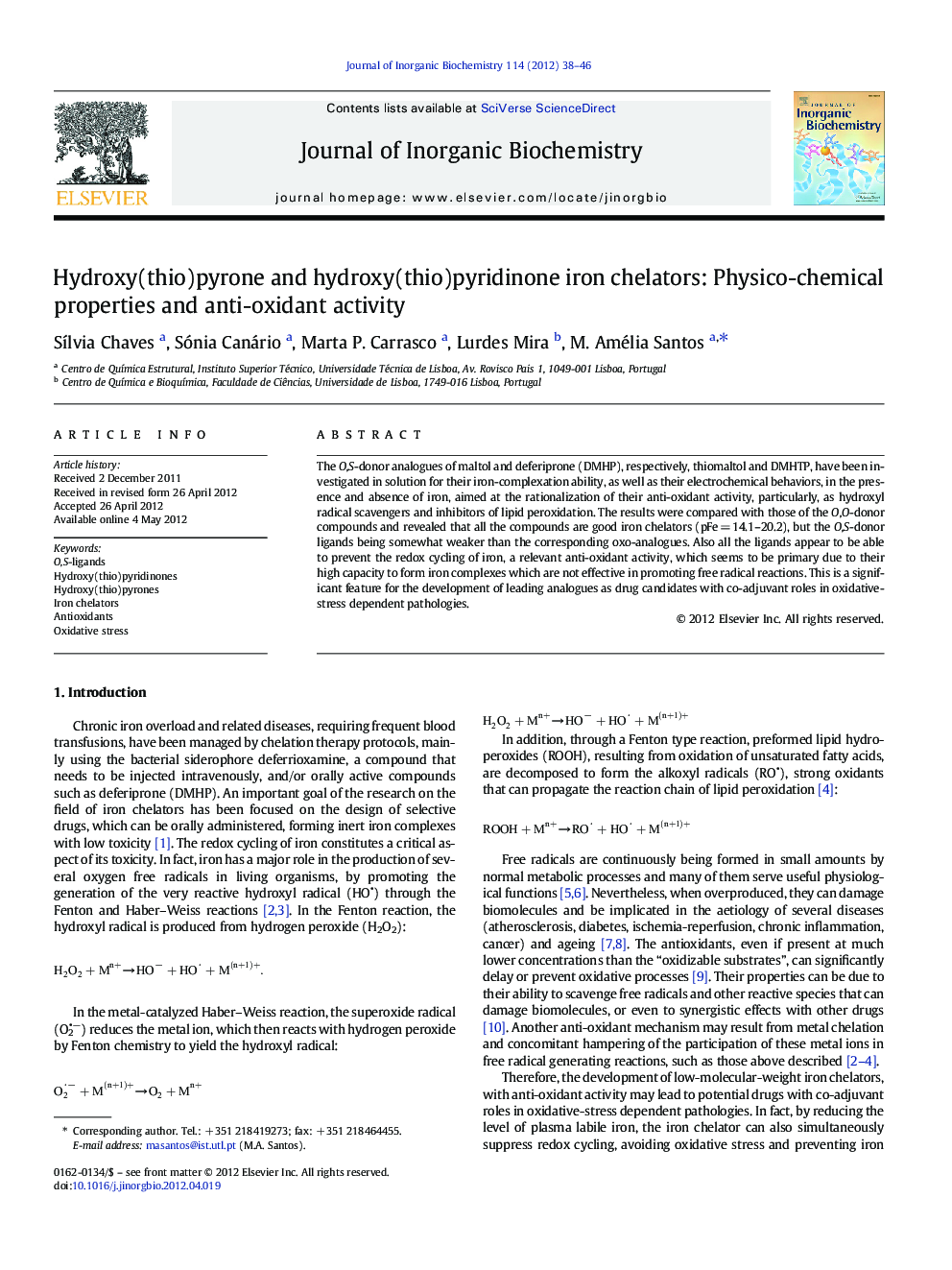| کد مقاله | کد نشریه | سال انتشار | مقاله انگلیسی | نسخه تمام متن |
|---|---|---|---|---|
| 1316461 | 1499473 | 2012 | 9 صفحه PDF | دانلود رایگان |

The O,S-donor analogues of maltol and deferiprone (DMHP), respectively, thiomaltol and DMHTP, have been investigated in solution for their iron-complexation ability, as well as their electrochemical behaviors, in the presence and absence of iron, aimed at the rationalization of their anti-oxidant activity, particularly, as hydroxyl radical scavengers and inhibitors of lipid peroxidation. The results were compared with those of the O,O-donor compounds and revealed that all the compounds are good iron chelators (pFe = 14.1–20.2), but the O,S-donor ligands being somewhat weaker than the corresponding oxo-analogues. Also all the ligands appear to be able to prevent the redox cycling of iron, a relevant anti-oxidant activity, which seems to be primary due to their high capacity to form iron complexes which are not effective in promoting free radical reactions. This is a significant feature for the development of leading analogues as drug candidates with co-adjuvant roles in oxidative-stress dependent pathologies.
Development and study of low molecular weight iron chelators, as pyrone derivatives with O,O‐and O,S-donor atoms. They showed ability to suppress redox cycling and anti-oxidant properties, thus possessing complementary roles against the oxidative stress, namely in iron‐overload pathologies.Figure optionsDownload as PowerPoint slideHighlights
► Development of pyrone derivatives with O,O- and O,S- donor atoms.
► Study of iron complexation, electrochemical behavior and anti-oxidant activity.
► All the compounds prevent redox cycling of iron and inhibit lipid peroxidation.
► Antioxidant roles result mostly from iron-chelation rather than radical scavenging.
Journal: Journal of Inorganic Biochemistry - Volume 114, September 2012, Pages 38–46